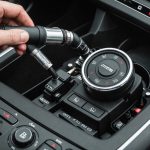Proper wheel alignment significantly impacts your vehicle’s tire longevity. Misalignment can lead to uneven tire wear, compromising safety and performance. Discover expert tips tailored for UK vehicles to help you perfect your wheel alignment. By implementing these strategies, you not only extend the life of your tires but also enhance your driving experience. Protect your investment and ensure your vehicle runs optimally with simple yet effective alignment techniques. Read on to maximize your tire longevity efficiently.
Understanding Wheel Alignment
Wheel alignment is a crucial aspect of vehicle maintenance that ensures your car's wheels are set to the optimal position as per the manufacturer's specifications. Proper alignment is vital for tire longevity and overall vehicle performance. Misalignment can lead to uneven tire wear, affecting how your vehicle handles and potentially leading to costly repairs.
Also to read : Revamping Classic UK Cars: A Guide to Seamlessly Adding Advanced Driver-Assistance Systems
When wheels are aligned correctly, they make consistent contact with the road, which helps in distributing the weight of the vehicle evenly across all tires. This uniformity reduces the stress on each tire, thus enhancing their lifespan and ensuring a smoother ride. Conversely, poor wheel alignment can cause tires to wear unevenly, leading to premature replacement and affecting your vehicle's fuel efficiency.
There are different types of wheel alignment, primarily categorized into 2-wheel and 4-wheel alignment. 2-wheel alignment involves adjusting the front wheels and is typically sufficient for vehicles with solid rear axles. 4-wheel alignment is more comprehensive, adjusting all four wheels and is necessary for vehicles with independent rear suspensions. The choice between these depends on your vehicle type and its specific requirements. Regular checks and adjustments can save you money and improve your driving experience by maintaining proper wheel alignment.
This might interest you : Step-by-Step Guide: Installing a Front and Rear Dash Cam in Your UK Vehicle
Identifying Signs of Misalignment
Understanding the signs of misalignment is essential for maintaining your vehicle's health and safety. One of the most apparent indicators is uneven tire wear. If you notice that the tread on one side of the tire is wearing down faster than the other, it suggests that your wheels might be misaligned.
Another common sign is when your vehicle pulls to one side while driving on a straight road. This can affect vehicle handling, making it difficult to keep the car straight and potentially compromising safety. Additionally, if your steering wheel is crooked when driving straight, it is a clear indication of misalignment.
Tire damage is not the only consequence; misalignment can also impact overall vehicle handling. You might experience vibrations in the steering wheel, especially at higher speeds, which can make driving uncomfortable and unsafe.
Visually inspecting your tires can also provide clues. Look for feathering or scalloping, which are patterns of wear that indicate misalignment. Regularly checking for these signs can help you address issues early, ensuring your vehicle remains safe and performs optimally. By understanding these indicators, you can take proactive steps to correct alignment problems before they lead to more significant damage.
Recommended Wheel Alignment Practices
Proper wheel alignment techniques are essential for optimal tire care and vehicle performance. Regular checks are crucial, and the frequency of these checks can vary based on several factors, including road conditions and driving habits. Typically, it is advisable to have your wheel alignment inspected every 6,000 to 10,000 miles. However, if you frequently drive on rough roads or notice signs of misalignment, you should consider more frequent inspections.
Maintenance Tips
To maintain proper alignment, adhere to these best practices:
- Routine Inspections: Regularly check your tires for uneven wear and ensure your steering wheel is centered when driving straight.
- Professional Alignment Services: Utilize professional services equipped with advanced tools like computerized alignment machines. These devices provide precise adjustments, ensuring your wheels are perfectly aligned.
- Mindful Driving: Avoid potholes and rough terrain when possible, as these can disrupt alignment.
Tools and Equipment
Technicians use specialized equipment for wheel alignment, including:
- Alignment Racks: These platforms lift the vehicle for easy access to the wheels.
- Laser Alignment Tools: These provide accurate measurements and adjustments.
- Camber Gauges: Used to measure the angle of the wheels relative to the ground.
By following these maintenance tips and utilizing the right tools, you can ensure your vehicle's wheels remain in optimal alignment, prolonging tire life and enhancing driving safety.
Professional Wheel Alignment Services in the UK
In the realm of UK vehicle maintenance, selecting the right professional services for wheel alignment is crucial. Certified alignment specialists ensure that your vehicle's wheels are aligned to the manufacturer's specifications, which is vital for optimal performance and safety. These experts have access to advanced tools and technology, allowing for precise adjustments that extend tire life and improve fuel efficiency.
When choosing a service provider, consider their reputation and expertise. Certified specialists often undergo rigorous training and are equipped with the latest alignment technology. This ensures they can handle various vehicle types, from standard cars to more complex models with independent rear suspensions.
Cost is an important factor when considering wheel alignment services. Prices can vary based on the type of alignment required and the service provider's location. On average, a standard two-wheel alignment might cost less than a comprehensive four-wheel alignment. However, investing in professional services can prevent costly repairs and tire replacements in the long run.
In summary, opting for certified wheel alignment services in the UK ensures your vehicle remains in top condition. By choosing experienced alignment specialists, you safeguard your investment and enhance your driving experience.
Case Studies and Expert Insights
Exploring real-world case studies reveals the significant impact of proper wheel alignment on tire longevity. In one notable example, a fleet of delivery vehicles experienced a 20% increase in tire lifespan after implementing regular alignment checks. This not only reduced their operational costs but also enhanced vehicle safety and performance.
Automotive experts emphasize the importance of routine alignment as a preventive measure. According to industry specialists, consistent alignment checks can mitigate issues before they escalate, offering peace of mind and financial savings. Experts suggest that even minor misalignments, if left uncorrected, can lead to uneven tire wear and decreased fuel efficiency.
Looking ahead, advancements in alignment technology promise further improvements in tire care. Emerging trends include the integration of AI and machine learning in alignment systems, allowing for more precise adjustments. These innovations aim to make alignment processes quicker and more accurate, ultimately benefiting tire longevity.
Expert tips recommend incorporating alignment checks into regular vehicle maintenance schedules. By doing so, drivers can ensure optimal tire performance and extend their lifespan. Additionally, staying informed about technological advancements can help vehicle owners make educated decisions about their alignment needs, fostering both safety and cost-efficiency.














